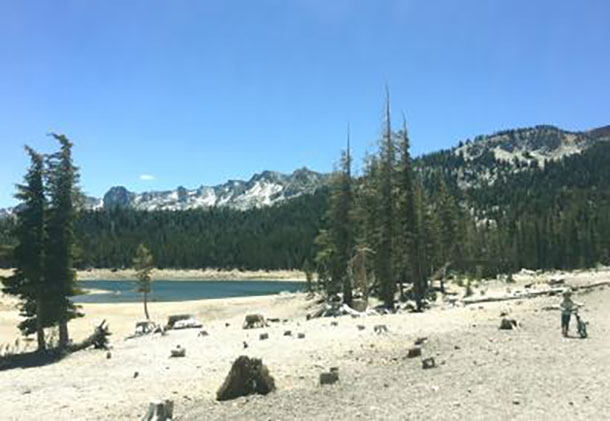THUNDER BAY – ARTS – There’s a persuasive anecdote about the rather spontaneous creativity John Keats possessed. My first encounter with what Keats would term our “negative capability” came from Stephen Hebron, a curator at the Bodleian Library in London. While Keats was walking home with a few colleagues one night, he paused to use terms like ideas dovetailed in my mind tonight. And he began to tell them he was struck thinking “what quality went to form a man of achievement?” Especially of course in Literature. Keats great hero-writer was Shakespeare. Keats told them, his dovetailing thoughts were primed imagining the enormous capacity of Shakespeare’s resilience in classic writing was what Keats termed: “negative-capability.”
He defined it as one experiencing uncertainties–and doubts–which Keats said were tempered because for some it brought on “little in irritability” as things arose. As interruptions in daily occurrences would go. Keats went on, “after reaching fact and reason–take Coleridge as another, being incapable of standing still remaining content with only half knowledge of a theme or subject.” Apparently Keats had been viewing a Christmas setting in 1817. He was brooding about stages that brought on true cleverness in artists. Originally, he felt there are strategic initiatives, and elements ,not possessed by mortal writers. Gradually they evolve a clever side to stay on track. When, perhaps, a cluster of negative factors loom. For, young as he was, Keats was forever trying to be determined to work things out.
We must stand back here to realize Keats father died young in an accident. His brother Tom contracted the family’s unbelievable inheritance, through time, all the sickness tuberculosis could ever bring on. Something Keats caught too, diagnosed as pulmonary tuberculosis, eventually ushering his long passage to Italy seeking a better climate where is colleague Percy Bysshe Shelley was writing.
While the romantic author Keats seemed virtually doomed to have the love and passion his heart held for his brightest star in life: Fanny Brawne, in the end, to be separated before marriage. In a letter to Benjamin Bailey, perhaps as a prelude to that Yuletide walk, Keats questioned, “did ever the greatest philosopher arrive at his goal without putting aside numerous objections to it?”
He continually debated what it was within one that improved one’s vision. He thought, “it is not itself–it has no self–yet, it is everything and nothing. For it has no character. It enjoys light and shade. May even live in gusto.”
Stephen Hebron told us that gusto in the era of Hazlitt and Keats was, “the power he delights to show.” Keats furthermore was convinced gusto was a force. Its presence did not impede. It was a boost to overcome a hurdle, pitfall, temporary setback. It would inform the independence and freedom of the poet.” That fortified the thrust of a writer, artist, creator to continue in his pursuits. His work. What Keats liked to describe as, “continually informing.”
Well here in our place transmitting this with an image of an English bird known as a nightingale, as we have been re-reading. Re-addressing. Another of John Keats’ wonderful odes: To A Nightingale. Many observers feel there is much gusto in the Nightingale Ode. With his true love Ms. Fanny Brawne intertwined in those verses.
Like the bird, Keats wishes “to fly to thee…I cannot see what flowers are at my feet, nor what soft incense hangs upon the boughs…” He laments the nightingale like our own lives will pass to another place. But Keats was ultimately the carver of a pastoral presence long ingrained on our green Earth In Ode to a Nightingale, he reflects, “the voice I hear this passing night was heard in Ancient days by emperor and clown.” And Keats parting adieu on a poetic curtain-like stage is both magical and enticing. “Forlorn! The very word is like a bell. To toll me back from thee to my sole self! (so) Adieu!”
Lastly ‘the negative-capability’ within Keats forte, as a poet, glazed his encounter with a bird. Singing in the night. Keats molds it all together for us, “was it a Vision, or a waking dream? Fled is that music:–Do I wake or sleep?” My own what I’ll describe as my creative crescendo this summer to a nocturnal bird calling just now over by our timberline: is a northern owl. Its creative hoot is clear. Its image is totally camouflaged in a deepening atmosphere.
Only a distinctive solo contrast with it. Viewed through our screened casement being embalmed in a deepening darkness, lately, a floating half moon climbs up there. Crayoned in a pumpkin-like orange blended with a tone of mandarin-like orange. As might be coloured by a child. Smudging an imagined child-vision into our region’s compelling spot-lit moon climbing a little higher surely. As the next notes of our resident owl seem to similarly rise to the muse of our moon. Keats would call it a partial Queen-moon glowing on her throne.
Though, in the end, all things become nicely elevated in our thoughts. In what we’ve seen and witnessed through the hours of this remarkable evening’s sun setting. Now, dissolving into the virtual holiness of a night’s muted stain glass chapel. Where a silence soon hovers. While one’s eye catches a few batches of the tallest tendrils of high trees silhouetted, like little masterpieces in space, against the sky.
Ronn Hartviksen

